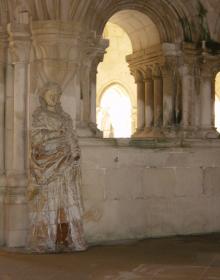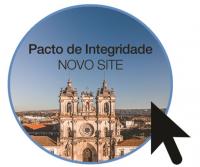- HOME
- MONUMENT
- VISIT OUR MONUMENT
- HERITAGE LEARNING
- ALCOBAÇA
- MONASTERIRES ROUTE

Architects
Domingo Domingues – Domingues was an architect appointed by the Royal Household to design and oversee the works on the King Dinis Cloister at the Monastery of Alcobaça between 1308 and 1311. He was also involved in the construction of the Santa Clara a Velha church in Coimbra.
Master Diogo – A 14th century architect who was involved in the construction of the King Dinis Cloister.
Mateus Fernandes – Born in Covilhã, this architect introduced the Manueline style in Portuguese architecture through the incorporation of maritime, flora-inspired and exotic themes related with the age of the discoveries and overseas expansion. King João II gave him the opportunity to travel throughout Europe to get to know the building techniques and architecture of European cathedrals. Mateus Fernandes worked on the reconstruction of the castles in Almeida and Castelo Branco, and on the construction of the Misericórdia (Mercy) Church in Caldas da Rainha. At Alcobaça he designed and oversaw the building work on the New Sacristy and Library.
João de Castilho – This Spanish architect was born 1470 and 1475 in Santander, Cantabria. He worked in Galicia, Naples and came to Portugal in the early 16th century. Some historians argue that he achieved the status of master builder in Seville. João de Castilho completed his first work in Portugal in 1509 – the Chapel of Braga Cathedra. Around the same time he also carried out work at the Church of Nossa Senhora das Areias (Our Lady of the Sands) in Barcelos and also worked in Coimbra. In 1511 he was responsible for works in Vila do Conde before commencing work on Viseu Cathedral, which he completed in 1513. In approx. 1515 he was commissioned by Manuel I to carry out diverse Manueline works at the Convent of Christ in Tomar. By the time he had finished that work he had gained considerable fame and prestige, so much so that he was appointed by the King to oversee the works on the Jerónimos Monastery in Lisbon. Around 1519 the King entrusted him with the construction of the New Sacristy and Library at Alcobaça. He was to continue to work intensively in Portugal under King João III, namely at Santa Maria de Belém, Freixo de Espada à Cinta, Arronches, Marvila, Santarém, Braga, Porto, Vila Nova da Barquinha, to name a few locations. In 1518 he was chosen to oversee works at the Monastery of Batalha and in 1542 he travelled to Asilah and El Jadida (then Mazagan) in Morocco, where he built military fortifications. He thus made a name for himself not only in sacred architecture but also in civil and military construction. According to Alberto Luna, João de Castilho is the only architect who carried out work on the five Portuguese monuments that have been classified as World Heritage Sites by UNESCO.
Rui Garcia – A master stonemason, Garcia carried worked on the Infirmary and walls of the Monastery of Alcobaça around 1519 under the guidance of Master Nicolau and João de Castilho.
João Turriano – An architect and Benedictine monk, Turriano was born in 1611. He taught at the Monastery of São Bento (St. Benedict) in 1629. Appointed Engineer-Major of the Realm by João IV, Turriano was responsible for a number of noteworthy works, including the High Altar at Viseu Cathedral, the High Altar at Leiria Cathedral, construction of the Cabeça Seca fortress, construction of the New Dormitory and Hospice at the Benedictine Convent at Semides. He drew up the plans for the Santa Clara a Velha convent in Coimbra and the new church at Santo Tirso. At Alcobaça he built the New Dormitory for the novices.
SERVICES - ACTIVITIES




